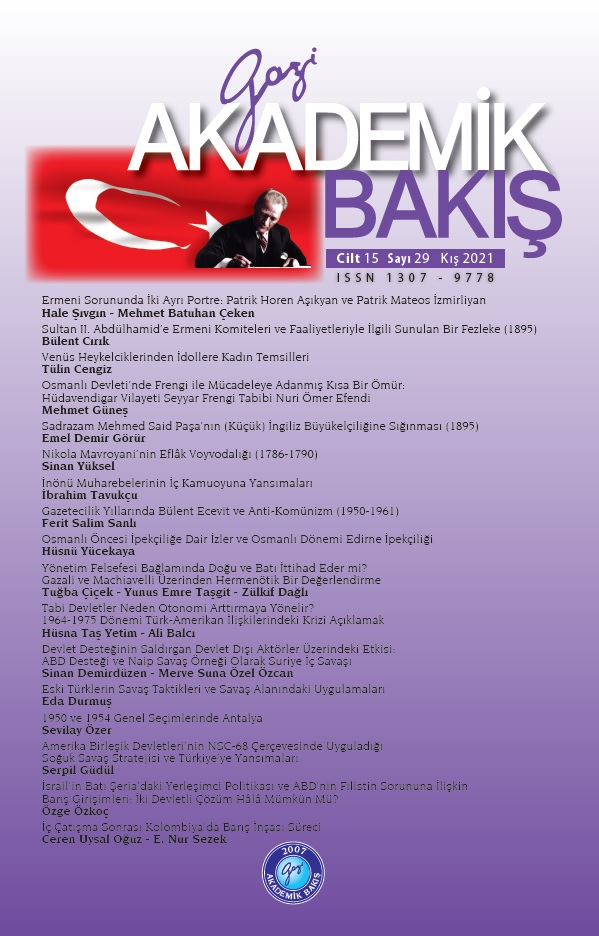Osmanlı Öncesi İpekçiliğe Dair İzler ve Osmanlı Dönemi Edirne İpekçiliği
Traces of Pre-Ottoman Sericulture in Relation to Ottoman-Era Sericulture of Edirne
Author(s): Hüsnü YÜCEKAYASubject(s): Politics / Political Sciences, History, Social Sciences, Modern Age
Published by: Gazi Akademik Bakış
Keywords: Edirne Sericulture; Tırnova Sericulture; Ottoman Sericulture; Turkish sericulture; Byzantine Sericulture;
Summary/Abstract: Just as sericulture has been a mysterious and secretive area of activity for millennia, it is also a culture that has been inherited throughout generations and that has carried very rigorous labor and technical accumulation within itself in all its stages. The role that Turkish states and communities played in the way that the silk culture has been carried beyond its Asian borders, where it was centered, and has been developed further, as reflected in research, is ambiguous and vague. Within this framework, the causal connection of Ottoman sericulture with its antecedents has not been questioned at all, either. The oldest dated documents regarding sericulture in the Ottoman Empire belong to the areas of the Morea and Edirne. Edirne was a part of, became the region where high-quality silk was supplied the earliest and the most commonly despite being the farthest region in distance from Iran, where the high-quality white cocoons were produced. In this context the issue has two aspects. The first one is that in the lands of Rumelia, in which Edirne was situated, activities of sericulture began early in comparison to Anatolia, which can be accounted for with a primitive and crude sericultural infrastructure taken over from the Byzantine period. The second aspect of the issue is that the silk farming culture was put into practice in a very rapid manner all over the Ottoman lands. A preliminary phase that requires centuries was realized in a very rapid fashion. The likeliest scenario concerning this subject can be explained as the revitalization of Turkish sericulture in Ottoman lands. Although archive documents about Edirne sericulture were first determined in the 16th century, the most intense document is in the 19th century. The documents' dependency on Iranian silk rapidly decreased and local output rose. A wide region surrounding Edirne nurtured Edirne's sericulture. In the second quarter of the 19th century, it is observed that the silk output of Edirne came close to one-third of the total silk output of the entire Ottoman Empire. By 1850, it is stated that the overwhelming majority of the population of Edirne engaged in the activity of silk farming. From the 1850s on, what attracts the attention as the most important point within the context of the sericulture of Edirne are the problems that foreign merchants became involved in regarding silk and silkworm seed. The most important point that reflects beyond all these problems concerns the level that the sericulture of Edirne reached.
Journal: Gazi Akademik Bakış
- Issue Year: 15/2021
- Issue No: 29
- Page Range: 155-172
- Page Count: 18
- Language: Turkish

